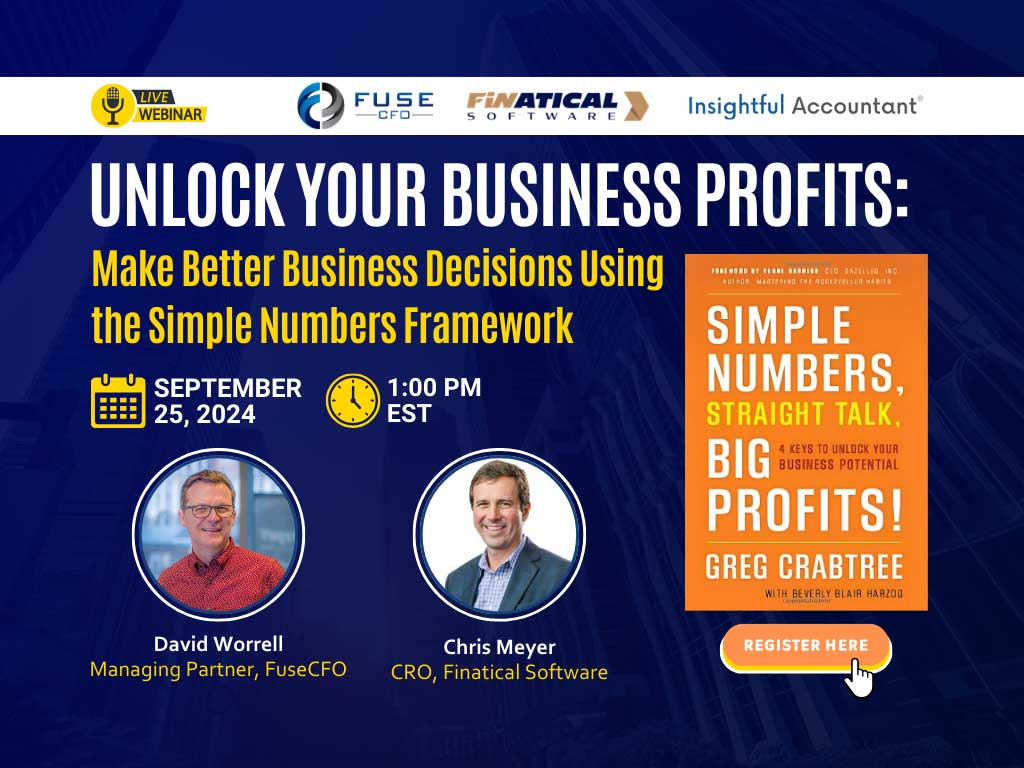
How To Balance Short-Term Profitability And Long-Term Growth

Mastering the balance between short-term profitability and long-term growth is beneficial and essential for survival and success. Walking the line between the two is fundamentally important for your company’s longevity and success.
Key Financial Metrics
Return on Invested Capital (ROIC) and cash flow forecasting are your compass and road map. Each tells you how your company uses capital effectively and helps predict future financial states.
ROIC is a profitability ratio. It measures how effectively your business generates profits from its invested capital. ROIC speaks to your company’s ability to use its capital to drive profits and growth. Investors and management use it to assess the health and potential of a business.
Cash flow forecasting is a financial management tool that predicts how and when money flows in and out of the business. It helps ensure sufficient liquidity for operations, planning for future investments, and preparing for potential financial challenges. ROIC and cash flow forecasting depict your company’s financial performance and potential for sustainable growth.
Strategies for Short-Term Profitability
Focusing on short-term profitability for small businesses involves a mix of agility and foresight. Efficient cash management, prudent cost control, and strategic pricing are the pillars of this approach.
It’s not just about cutting costs; it’s about smart spending. Effective short-term strategies also involve optimizing inventory management and enhancing customer relationships to boost immediate revenues.
Planning for Long-Term Growth
Long-term growth is your north star. This growth trajectory is fueled by continuous innovation, market expansion, and investment in human capital.
It’s about building a brand and a legacy that transcends immediate market fluctuations. Diversifying product lines and entering new markets are key strategies for sustainable growth.
Case Study: TechForward
Let’s reexamine the situation from a different angle. TechForward, a hypothetical software company, initially focused too much on immediate profits, ignoring the importance of Research and Development (R&D). This oversight threatened their technological relevance in the fast-paced software industry.
This approach changed when the CEO recognized the potential long-term consequences of neglecting innovation. She initiated a strategic shift, redirecting resources towards R&D and technology upgrades. This was not just about keeping up with industry trends but positioning TechForward as a forward-thinking competitor.
By balancing immediate financial goals with strategic investments in innovation, TechForward began cultivating a culture of creativity and experimentation. This change was crucial in maintaining their competitive edge and ensuring sustainable success.
The CEO’s decision to prioritize long-term innovation marked a pivotal moment for the company, demonstrating the necessity of aligning short-term gains with future-focused development in the tech industry.
Short-Term Profitability and Long-Term Growth Strategies
Balancing short-term gains with long-term growth requires strategic thinking and proactive decision-making. Businesses must establish a clear vision for the future while maintaining flexibility to adapt to immediate challenges. This balance involves:
- Regularly reviewing and adjusting financial strategies to align with changing market conditions.
- Encouraging a company culture that understands the value of long-term investments.
- Implementing financial controls to monitor and optimize spending.
Leadership’s Role
Leadership plays a pivotal role in this balancing act. Leaders need to champion the vision for long-term growth while ensuring the team remains focused on current objectives—like what happened in our example of TechForward. This involves clear communication, setting realistic goals, and motivating the team towards achieving these dual objectives.
The Impact of Technology on Financial Strategy
Leveraging technology is crucial for short-term efficiency and long-term growth. TechForward, for instance, could use advanced analytics to identify new market opportunities and streamline operations. Implementing the right technology can lead to significant cost savings and open doors to innovative business models.
The business landscape is fraught with uncertainties. A balanced approach prepares companies to weather economic downturns without derailing long-term growth plans. This requires building a financial buffer and having contingency plans in place.
FuseCFO
Balancing short-term profitability with long-term growth is an ongoing process that requires diligence, foresight, and adaptability. It’s about making smart decisions today that will pave the way for a prosperous future. When you meet with us, remember that we always begin by listening—and then we will answer your questions. Schedule your free business analysis today.




